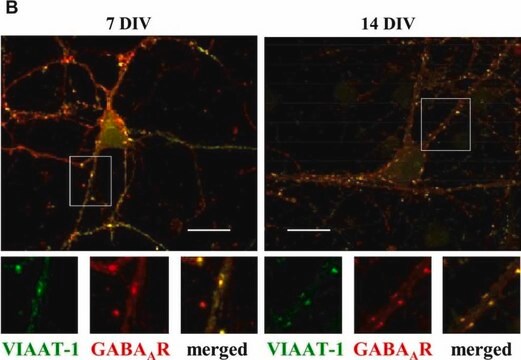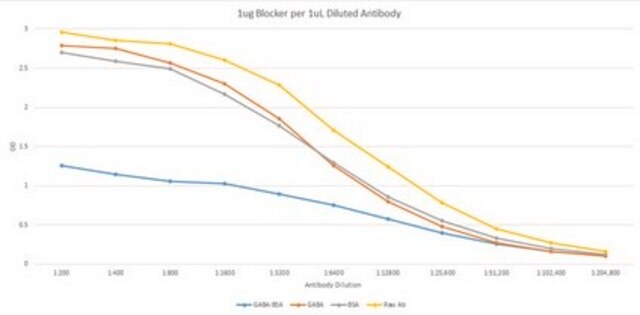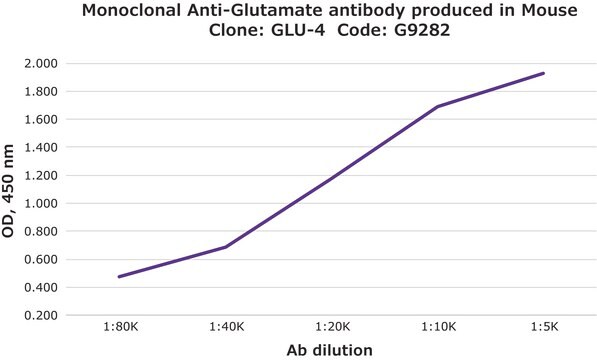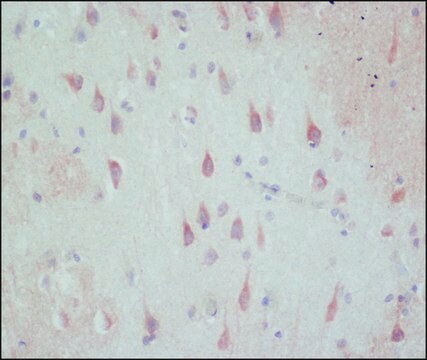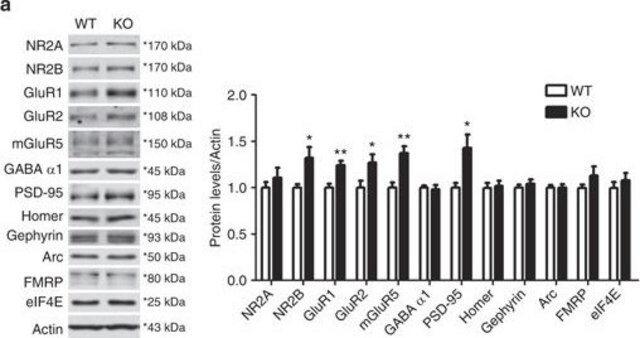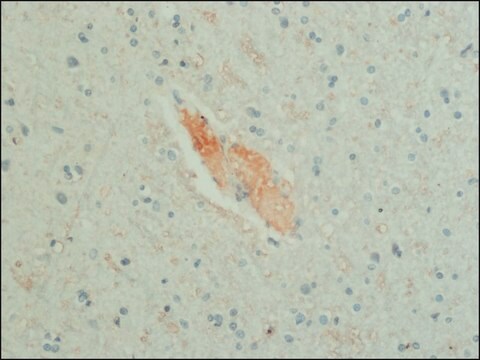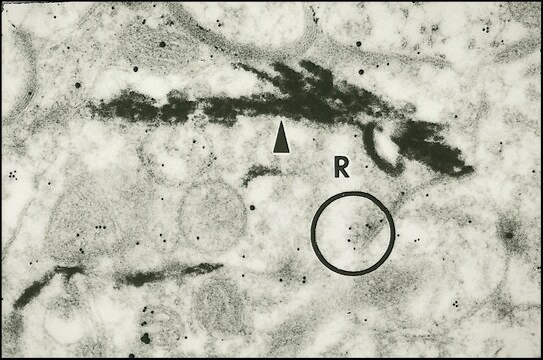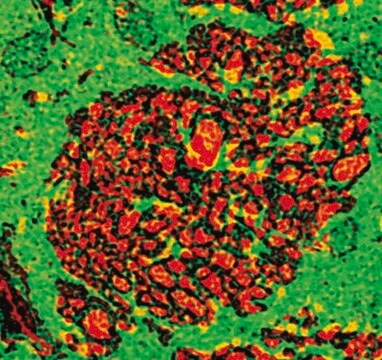MABN875
Anti- GABAA Antibody γ2 Subunit, clone KC4-8A7
clone KC4-8A7, from mouse
Synonym(s):
Gamma-aminobutyric acid receptor subunit gamma-2, GABA(A) receptor subunit gamma-2, GABAA γ2 Subunit
About This Item
Recommended Products
biological source
mouse
Quality Level
antibody form
purified immunoglobulin
antibody product type
primary antibodies
clone
KC4-8A7, monoclonal
species reactivity
rat, bovine, human, mouse
technique(s)
ELISA: suitable
immunohistochemistry: suitable (paraffin)
immunoprecipitation (IP): suitable
western blot: suitable
isotype
IgG2aκ
NCBI accession no.
UniProt accession no.
shipped in
wet ice
target post-translational modification
unmodified
Gene Information
human ... GABRG2(2566)
General description
Specificity
Immunogen
Application
Neuroscience
Developmental Neuroscience
Western Blotting Analysis: 1.0 µg/mL from a representative lot detected GABAA γ2 Subunit in 10 µg of human brain tissue lysate.
Immunohistochemistry Analysis: A 1:250 dilution from a representative lot detected GABAA γ2 Subunit in human cerebral cortex tissue.
Western Blotting Analysis: A representative lot detected human GABAA gamma2 subunit cytoplasmic domain GST fusion protein, as well as endogenous GABAA gamma2 subunit in purified bovine brain GABAA receptor complex (Fernando, L.P., et al. (1995). J Neurochem. 64(3):1305-1311).
Immunoprecipitation Analysis: A representative lot immunoprecipitated GABAA receptor complex from rat cerebral cortex membrane extracts, as well as purified bovine brain GABAA receptor complex as measured by ligand-binding activity associated with the immune complex (Fernando, L.P., et al. (1995). J Neurochem. 64(3):1305-1311).
ELISA Analysis: A representative lot detected human GABAA gamma2 cytoplasmic domain GST fusion protein, but not GST (Fernando, L.P., et al. (1995). J Neurochem. 64(3):1305-1311).
Quality
Western Blotting Analysis: 1.0 µg/mL of this antibody detected GABAA γ2 Subunit in 10 µg of rat brain tissue lysate.
Note: For Western blotting analysis, DO NOT BOIL samples prior to electrophoresis. After dissociating receptor complex with SDS sample buffer, remove non-solublized material by centrifugation.
Target description
Physical form
Storage and Stability
Other Notes
Disclaimer
Not finding the right product?
Try our Product Selector Tool.
Storage Class Code
12 - Non Combustible Liquids
WGK
WGK 1
Flash Point(F)
Not applicable
Flash Point(C)
Not applicable
Regulatory Listings
Regulatory Listings are mainly provided for chemical products. Only limited information can be provided here for non-chemical products. No entry means none of the components are listed. It is the user’s obligation to ensure the safe and legal use of the product.
JAN Code
MABN875:
Certificates of Analysis (COA)
Search for Certificates of Analysis (COA) by entering the products Lot/Batch Number. Lot and Batch Numbers can be found on a product’s label following the words ‘Lot’ or ‘Batch’.
Already Own This Product?
Find documentation for the products that you have recently purchased in the Document Library.
Our team of scientists has experience in all areas of research including Life Science, Material Science, Chemical Synthesis, Chromatography, Analytical and many others.
Contact Technical Service